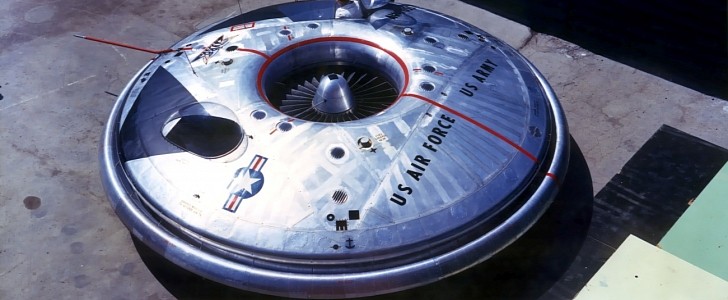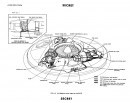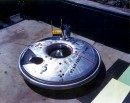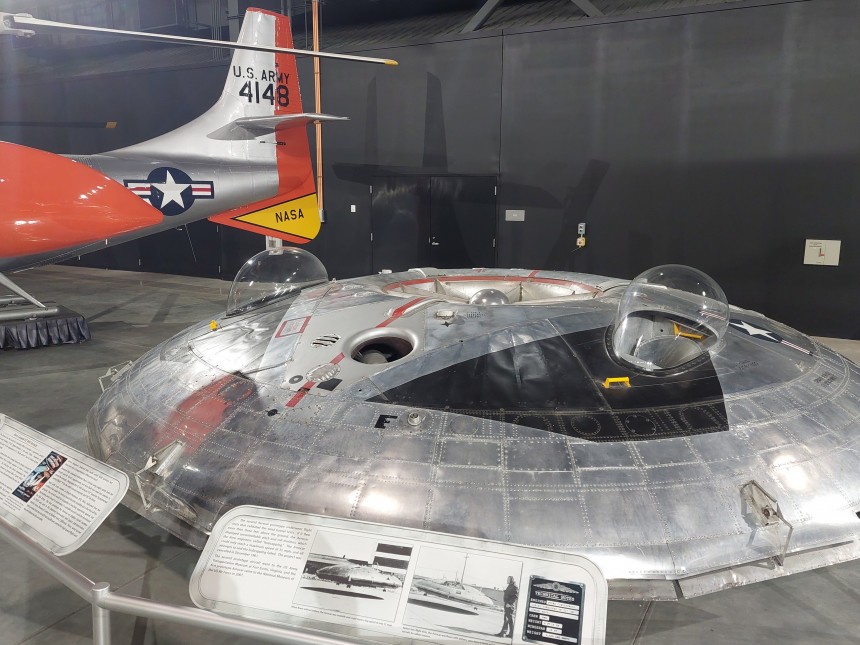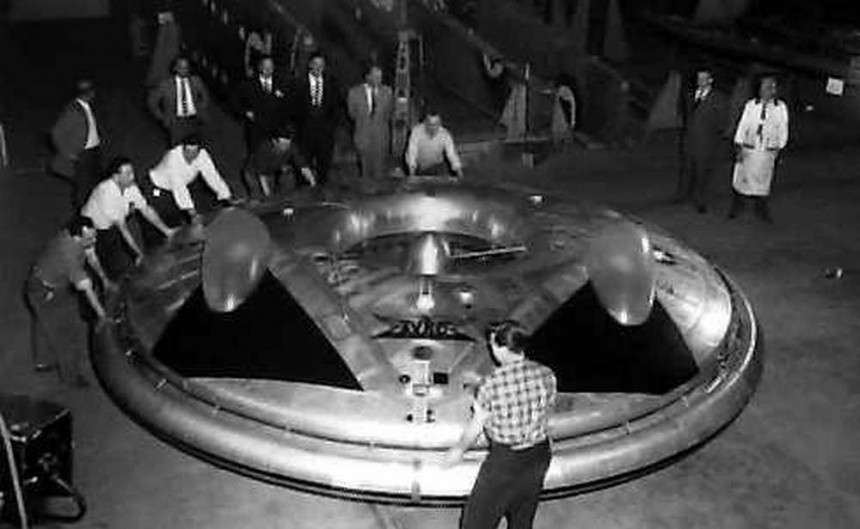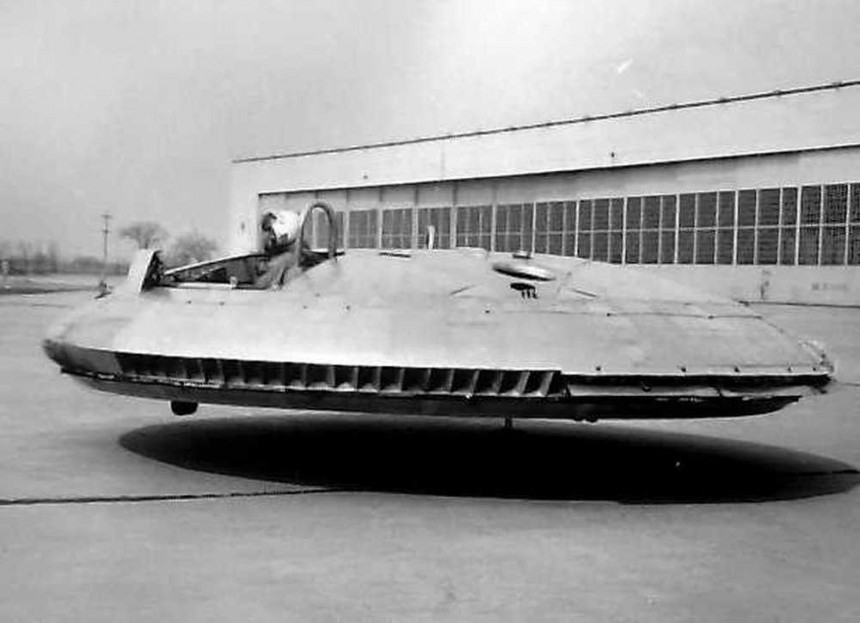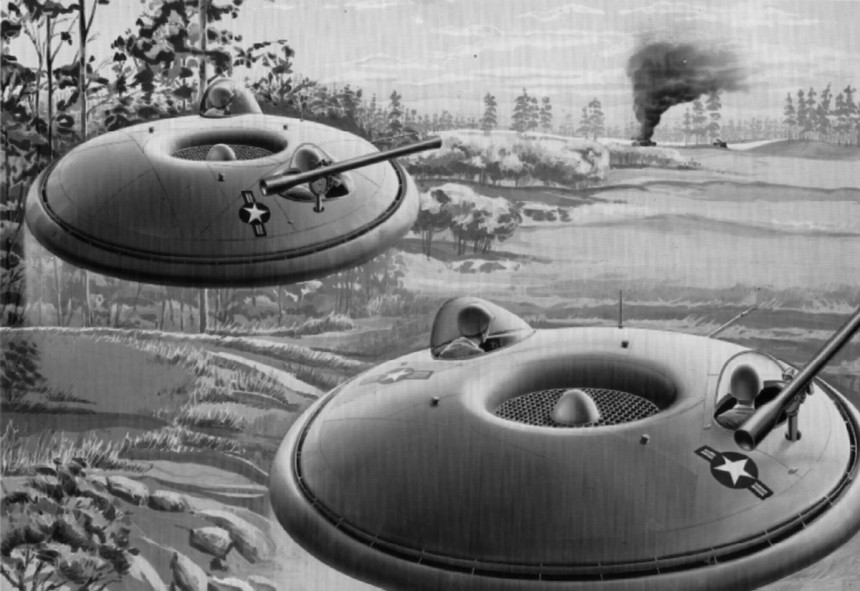Just like the automobile market, the military industry has spawned quite a few weird vehicles over the years. While some ideas were abandoned while still on the drawing board, some were developed into functional prototypes.
A few of them were lucky enough to survive after their respective projects were canceled. Luckily enough, we can find them in museums several decades later. The National Museum of the United States Air Force in Dayton, Ohio, for instance, has a few weird warbirds on display. And it's home to what must be the most unusual aircraft ever commissioned by the U.S. military: the Avro Canada VZ-9 Avrocar.
Like many weird military contraptions, the Avrocar was born in the early years of the Cold War. A VTOL-type (vertical take-off and landing) aircraft, it was the brainchild of John Frost.
A brilliant engineer, he previously worked on pioneering supersonic aircraft in Britain and then spearheaded Canada's first jet fighter project, the CF-100.
The roots of the Avrocar lie in Project Y and Project Y-2, a couple of experimental aircraft that explored not only VTOL technology but also the Coanda effect. Frost was also experimenting with a new type of engine layout with the flame cans lying directly outside the outer rim of the centrifugal compressor.
Drawing power from a new type of turbine similar to a centrifugal fan rather than a pinwheel-like design and using gearing rather than a shaft to drive the compressor, the engine looked like a large disk. Frost called it the "pancake engine."
With the powerplant still in development, Frost proposed building a smaller "proof-of-concept" test vehicle in 1958. He pitched the idea to the U.S. Army, which was already experimenting with smaller VTOL aircraft to use as a "flying Jeep" at the time.
Claiming a 10-minute hovering capability and a 25-mile (40 km) range with a 1,000-pound (450-kg) payload, Frost convinced the U.S. Government to approve a $2-million joint-services contract. The agreement required Avro Canada to build and test two Avrocars. The army dubbed the aircraft VZ-9-AV.
As the project moved on, Frost received additional funding of more than $2 million. He also became more confident of the Avrocar's potential and projected a maximum speed of 225 knots (259 mph / 417 kph), a 10,000-foot (3,000-meter) ceiling, and a 130-mile (290-km) range.
Unlike Project Y, the Avrocar was a disk-shaped aircraft. Built around a large equilateral triangle as a main structural truss, the disk was 18 feet (5.5 meters) in diameter and 3.5 feet (1.1 meters) thick.
Placed in the center, the 124-blade rotor was powered by three Continental J69-T-9 jet engines, each paired to their fuel and oil tanks.
The first Avrocar was completed in May 1959 and began testing in June the same year. Several issues that caused reduced maximum lift at higher altitudes out of the ground effect were discovered, and the vehicle was sent to NASA for wind tunnel testing.
Avro finished the second prototype in August 1959, and testing commenced a month later. Severe stability issues prompted a series of modifications, and the first free flight did not occur until November 1959.
But the Avrocar was still far from what Frost had promised it would be. Unstable at speeds higher than 30 knots (35 mph / 56 kph) and with overall engine thrust (and power) greatly reduced by the ring below the annular flap, the Avrocar was redesigned several times through 1960.
Modifications made following testing at the NASA Ames Research Center paid off, and the Avrocar was tested with much better control in hover mode and significantly improved lift.
It was also able to travel at up to 100 knots (118 mph / 190 kph). However, it remained unstable in pitch, and the attempts to add a T-tail and a wing proved unsuccessful.
Yet another improved version with General Electric J85 turbojets and a larger-diameter rotor was used to successfully traverse a ditch six feet (1.8 meters) across and 18 inches (460 mm) deep, but the Avrocar continued to display a range of control problems. In addition, flight above the critical altitude proved dangerous due to inherent instability.
Both Avro and USAF test pilots all described the flying disk as tricky to fly, while one NASA pilot said flying the Avrocar was like "balancing on a beach ball."
Making matters worse, the prototype could not lift itself safely more than just a few feet off the ground. The extreme heat in the cockpit and the high exhaust noise also made it impractical for military use.
Despite all these issues, Frost was still confident that the design could work. But the U.S. military did not agree and canceled all VTOL-related programs in December 1961, rendering the technology a failure.
Even so, Avro's flying saucer inspired the Moller M400, a VTOL-style flying car (that has yet to achieve flight), and spawned many patents that established the pivotal role of Frost's research into VTOL technology.
What's more, some argue that the Avrocar was only a rubber skirt away from becoming one of the world's first hovercrafts, a concept that also took off in the late 1950s.
Now a failed experiment that's spending its retirement years in a museum, the Avrocar was the closest thing to having flying saucers in the sky. Aside from all the controversial UFO sightings, that is.
Like many weird military contraptions, the Avrocar was born in the early years of the Cold War. A VTOL-type (vertical take-off and landing) aircraft, it was the brainchild of John Frost.
A brilliant engineer, he previously worked on pioneering supersonic aircraft in Britain and then spearheaded Canada's first jet fighter project, the CF-100.
The roots of the Avrocar lie in Project Y and Project Y-2, a couple of experimental aircraft that explored not only VTOL technology but also the Coanda effect. Frost was also experimenting with a new type of engine layout with the flame cans lying directly outside the outer rim of the centrifugal compressor.
With the powerplant still in development, Frost proposed building a smaller "proof-of-concept" test vehicle in 1958. He pitched the idea to the U.S. Army, which was already experimenting with smaller VTOL aircraft to use as a "flying Jeep" at the time.
Claiming a 10-minute hovering capability and a 25-mile (40 km) range with a 1,000-pound (450-kg) payload, Frost convinced the U.S. Government to approve a $2-million joint-services contract. The agreement required Avro Canada to build and test two Avrocars. The army dubbed the aircraft VZ-9-AV.
As the project moved on, Frost received additional funding of more than $2 million. He also became more confident of the Avrocar's potential and projected a maximum speed of 225 knots (259 mph / 417 kph), a 10,000-foot (3,000-meter) ceiling, and a 130-mile (290-km) range.
Placed in the center, the 124-blade rotor was powered by three Continental J69-T-9 jet engines, each paired to their fuel and oil tanks.
The first Avrocar was completed in May 1959 and began testing in June the same year. Several issues that caused reduced maximum lift at higher altitudes out of the ground effect were discovered, and the vehicle was sent to NASA for wind tunnel testing.
Avro finished the second prototype in August 1959, and testing commenced a month later. Severe stability issues prompted a series of modifications, and the first free flight did not occur until November 1959.
Modifications made following testing at the NASA Ames Research Center paid off, and the Avrocar was tested with much better control in hover mode and significantly improved lift.
It was also able to travel at up to 100 knots (118 mph / 190 kph). However, it remained unstable in pitch, and the attempts to add a T-tail and a wing proved unsuccessful.
Yet another improved version with General Electric J85 turbojets and a larger-diameter rotor was used to successfully traverse a ditch six feet (1.8 meters) across and 18 inches (460 mm) deep, but the Avrocar continued to display a range of control problems. In addition, flight above the critical altitude proved dangerous due to inherent instability.
Making matters worse, the prototype could not lift itself safely more than just a few feet off the ground. The extreme heat in the cockpit and the high exhaust noise also made it impractical for military use.
Despite all these issues, Frost was still confident that the design could work. But the U.S. military did not agree and canceled all VTOL-related programs in December 1961, rendering the technology a failure.
Even so, Avro's flying saucer inspired the Moller M400, a VTOL-style flying car (that has yet to achieve flight), and spawned many patents that established the pivotal role of Frost's research into VTOL technology.
Now a failed experiment that's spending its retirement years in a museum, the Avrocar was the closest thing to having flying saucers in the sky. Aside from all the controversial UFO sightings, that is.
